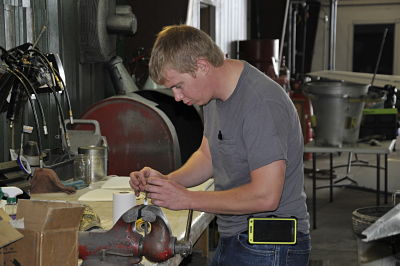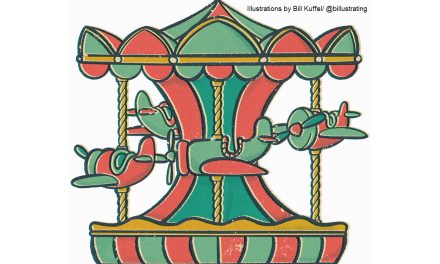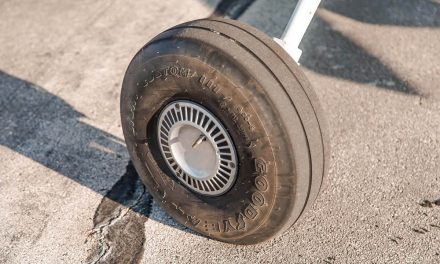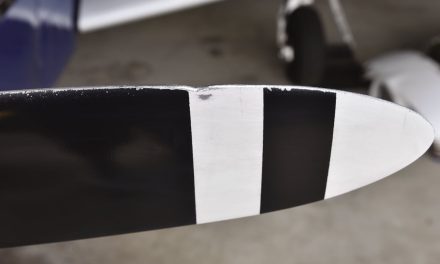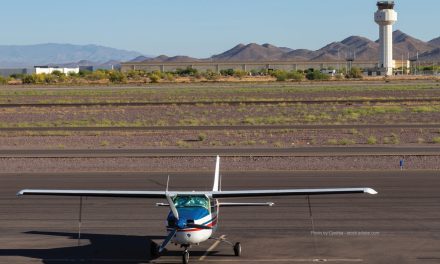If you have your aircraft maintained by a certified mechanic, it shouldn’t be an insurance issue. Many aircraft insurance policies even have language about mechanics flying the aircraft on test or service flights with the idea being if the mechanic needs to fly the airplane for some reason, he or she is covered by the open pilot warranty language like the sample below.
“… Any pilot designated by a Federal Aviation Administration certificated Repair Station or other aircraft repair or maintenance facility which is exercising care, custody or control of the aircraft, provided in flight operation is necessary in connection with work being performed on the aircraft by the station or facility.”
Additionally, if you have a claim that is found to be caused by the mechanic or shop, the insurance company will typically pay the claim but through the “subrogation of rights” portion of the policy, the insurance company will pursue the mechanic or shop for reimbursement of the claim.
The only concern for a pilot-owner, then, comes about when the owner or a non-mechanic is doing maintenance on the aircraft. But even if the owner does the maintenance, there really isn’t any language that I have found that could lead to a situation where insurance would not cover the loss. I think the real issue is if the repair was “legal” with respect to FAA rules.
What does the FAA say an owner can do?
Taking that into account, aircraft owners can save lots of money if they do some of the work on their own. But what can an owner do? If you build an aircraft and you have the repairman certificate, you can do the work on that aircraft. If you buy an aircraft (standard or experimental category) and you didn’t build it, you are supposed to pay a mechanic to do the maintenance.
But there are always gray areas. My local FSDO (Flight Standards District Office) has given me opinions on repairs and maintenance for my experimental aircraft that included an opportunity to do a tremendous number of things that other FSDO offices might not agree with. They all seem to have different opinions.
In my case, I usually ask before I do something. In the past I have asked about importing a custom-built aircraft from Canada and ended up getting a negative response. Because of the response, I didn’t buy the aircraft. I think that is important. If the local FAA office isn’t receptive to what you want to do, it is easier and cheaper to change plans early and do something instead that is considered acceptable.
Just remember, in general, if you didn’t build the aircraft, it needs a mechanic sign-off. Oh, and from my experience, be nice to the FAA. It has worked a lot better for me when I try to work with them instead of taking the negative, anti-FAA stance.
Disclaimer time, I do not work for the FAA and I am not a certified mechanic. The FAA changes rules and often we don’t see it right away. So always check with the FAA to make sure you have the most-current information. Remember as the owner and the pilot, it is your licenses at risk. Better safe than sorry; if you are uncomfortable or unsure, just don’t do it.
Define ‘preventive maintenance’
As a non-FAA certified mechanic/owner, basically “preventive maintenance” is all you can do. So, let’s start with the FAA’s definition of preventive maintenance.
“…b. Preventive Maintenance. Section 1.1, defines preventive maintenance as “simple or minor preservation operations and the replacement of small standard parts not involving complex assembly operations.”
If you get out the FARs or access them online, you will find that FAA guidelines in FAR Part 43 section (g) says: “The holder of a pilot certificate issued under Part 61 may perform preventive maintenance on any aircraft owned or operated by that pilot which is not used under Part 121, 129, or 135.” The key words are preventive maintenance, so see the above definition.
If you want more of the details, go to the FAA Safety website and look up the handout they have about owning an aircraft. We created a link for you (bit.ly/FAA-OwnerMaint) so you can download the PDF. Note that the link is case-sensitive. In addition, you need to look at the FAA’s guidelines as to who is qualified to do preventive maintenance. Again, if you go to the FAA website you can get the Advisory Circular AC 43-12A and it should provide some clarification.
Below is a section from the circular.
“…c. Authorization to Perform Preventive Maintenance and Approve for Return to Service. (1) In addition to those persons listed in paragraph 3a, § 43.3(g), (h), and (i) authorize the holder of a pilot certificate issued under part 61 to perform preventive maintenance. Section 43.7 limits the privilege to persons holding at least a private or sport pilot certificate and § 91.407(a)(1) prohibits operation of the aircraft unless approved for return to service. Further, pilots may only approve for return to service preventive maintenance which they themselves have accomplished. (2) A pilot may only perform preventive maintenance on an aircraft used under part 135 if the conditions of § 43.3(h) and (i) are met. (3) The holder of a sport pilot certificate may perform preventive maintenance on an aircraft owned or operated by that pilot and issued a Special Airworthiness Certificate in the light-sport category. NOTE: A pilot may not perform preventive maintenance on aircraft used under part 121, even if the pilot owns the aircraft.”
Surprisingly there are a lot of things you can do yourself, legally. A few of the items from the FAR section (c) are listed below. “Section c) Preventive maintenance. Preventive maintenance is limited to the following work, provided it does not involve complex assembly operations:
- “Removal, installation, and repair of landing gear tires.
- Replacing elastic shock absorber cords on landing gear.
- Servicing landing gear shock struts by adding oil, air, or both.
- Servicing landing gear wheel bearings, such as cleaning and greasing.
- Replacing defective safety wiring or cotter keys.
- Lubrication not requiring disassembly other than removal of nonstructural items such as cover plates, cowlings, and fairings.
- Refinishing decorative coating of fuselage, balloon baskets, wings tail group surfaces (excluding balanced control surfaces), fairings, cowlings, landing gear, cabin, or cockpit interior when removal or disassembly of any primary structure or operating system is not required.
- Applying preservative or protective material to components where no disassembly of any primary structure or operating system is involved and where such coating is not prohibited or is not contrary to good practices.
- Repairing upholstery and decorative furnishings of the cabin, cockpit, or balloon basket interior when the repairing does not require disassembly of any primary structure or operating system or interfere with an operating system or affect the primary structure of the aircraft.”
There are many more items on the list then just these. But you can get the idea. If the owner of the aircraft were to undertake even a small part of this list, they could save a few bucks. And most of the items don’t really take any special tools or skills. Although if you are like me, the more tools I have the more of a “mechanic” I feel like.
Print out the FARs
Every pilot or owner should have a copy of these items available for their review. I think I’d print them and save them in the logbook file or in a “maintenance” file. In fact, I think the owner of an aircraft should probably have a binder with maintenance information for their aircraft in it (something separate from the logbooks). In fact, the service and parts manual should all be in the same place. To get a copy of the FARs for your own files, check out the FAA website.
Additionally, every pilot, owner, or builder ought to own a copy FAR Part 43.13. This FAR will tell you (the person working on the plane) what the FAA accepts as correct repairs and workmanship. If you want to know what type of washer should be on a certain type of rivet, this guide will tell you. If you need to know how to repair a bent part, this guide will tell you. Everyone should have a source like this available. No, it’s not the only source, but it sure can provide a good start.
And if you really want to save money you should look over the FAA Part 43 that discusses the details that are on an annual inspection. You will learn, and I think many a mechanic will agree, that if you do good preventive maintenance and repair items that need repair at the time they need it, the average cost of the annual will be reduced. If regular maintenance can cut the annual cost, it also means that your average cost of maintenance should be reduced.
Be involved with your plane’s maintenance
I think that every owner should try to maintain the aircraft themselves. For one thing, those who don’t often wind up delaying minor-but-necessary repairs until annual. I don’t know how many times I have talked to an owner who had a small problem or repair and postponed it for the annual and ended up spending more money on the repair than it would have cost had it been fixed right away. Delaying repairs usually ends up costing more money.
Doing your own maintenance also teaches you about your aircraft and gives you a better understanding of not only how things work but how much the mechanic must do. I used to think I could do a repair on my airplane and I’d be done in an hour. Three hours later, I’d still be working on it. And I was working in a professional facility with all the tools and access to all the help I needed.
I believe that the future of general aviation will hinge heavily on the cost of maintenance. If we can do a little maintenance to keep our aircraft flying, our annuals will be faster and cheaper and the complaints against mechanics will be reduced. If all those things take place, the mechanics’ insurance claims should be fewer, rates should be lower, and hourly charges should be less. Seems like a win-win situation.

